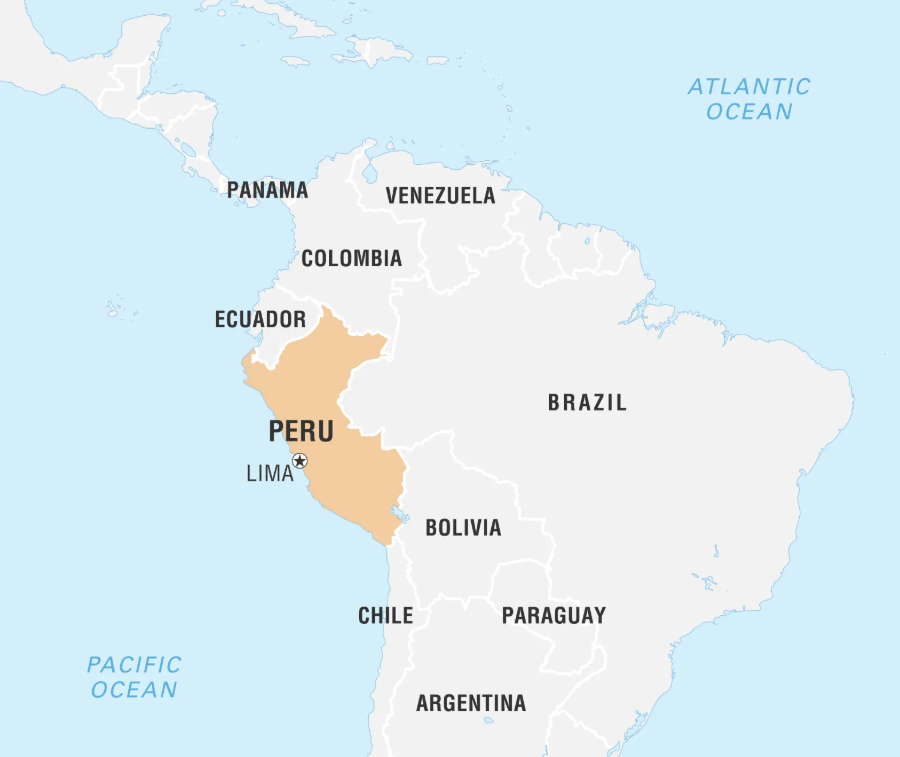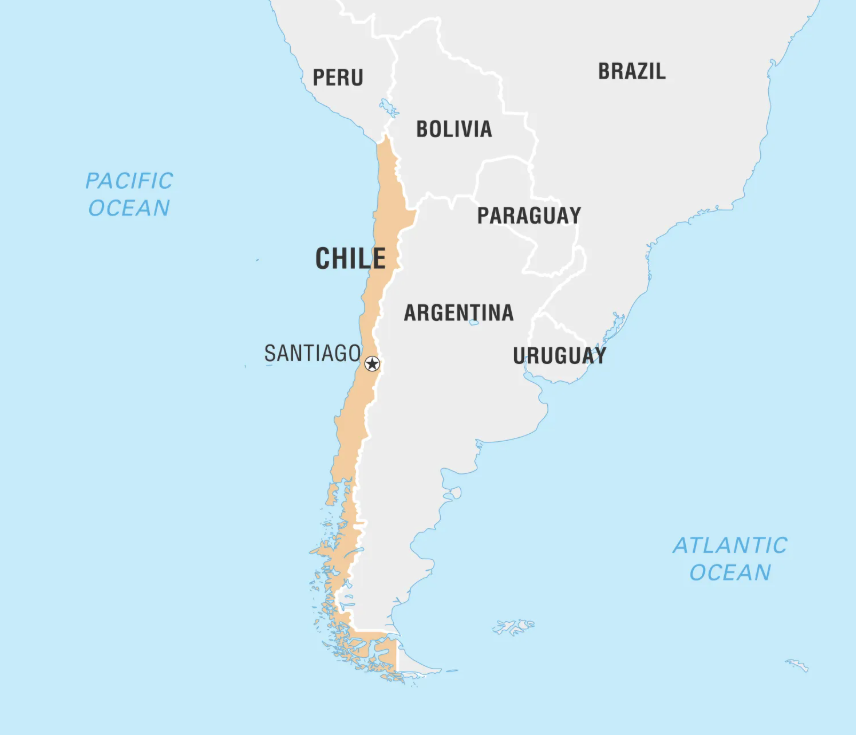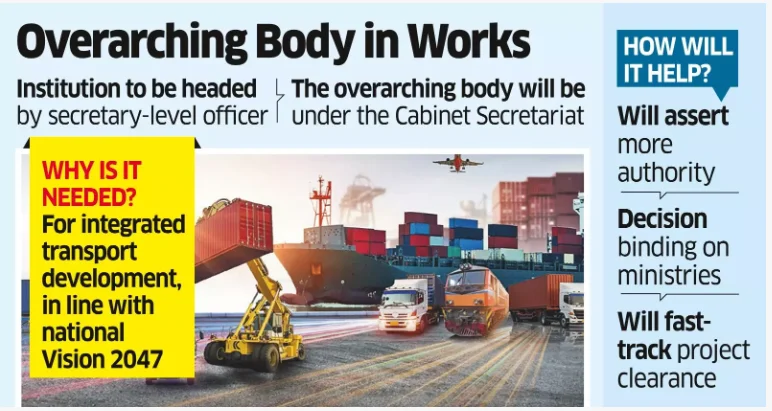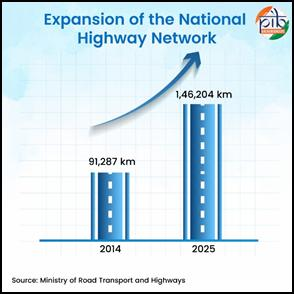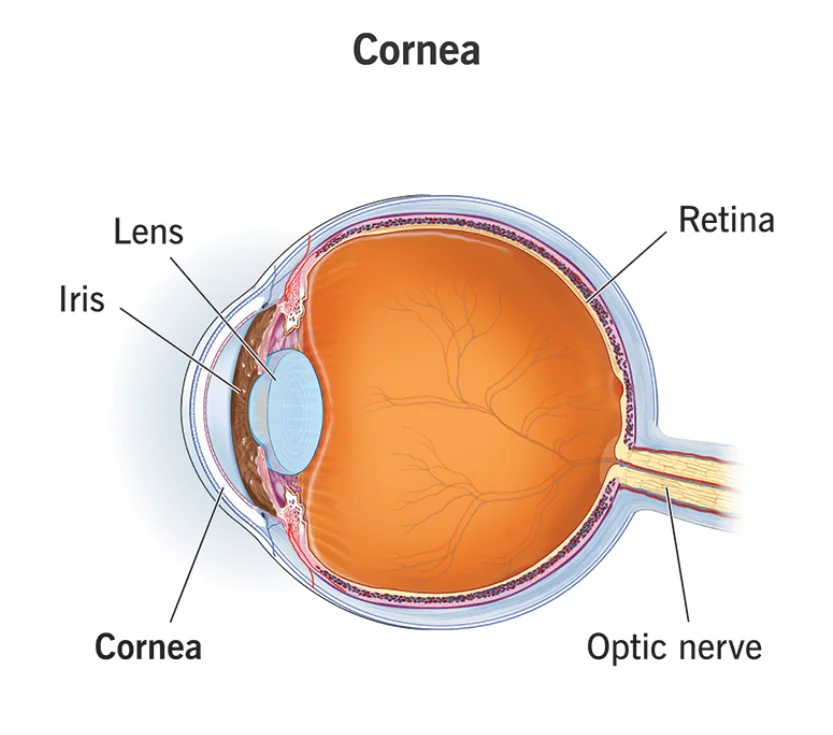International Relations
India-Latin America Trade Engagement
For Prelims: Latin America, Preferential Trade Agreement, Double Taxation Avoidance Agreement
For Mains: Importance of Latin America for India, India’s South-South cooperation
Why in News?
India has strengthened its Latin America trade engagement by completing the 9th round of trade talks with Peru and the 3rd round of Comprehensive Economic Partnership Agreement (CEPA) negotiations with Chile.
What are the Key Areas of Cooperation Between India and Peru?
- Economic & Trade Relations: Peru is India’s 3rd-largest trading partner in the Latin America–Caribbean (LAC) region, with bilateral trade rising from USD 66 million in 2003 to about USD 3.68 billion in 2023.
- India is a major importer of Peruvian gold and copper. The ongoing trade agreement is expected to deepen cooperation and unlock new opportunities across key sectors.
- 9th Round of India-Peru Trade Agreement negotiations covered critical topics such as Trade in Goods and Services, Rules of Origin, Technical Barriers to Trade and Critical Minerals, etc.
- Development Partnership: India has provided medical support during emergencies (COVID-19, Guillain-Barré outbreak 2023)
- India provides technical collaboration through initiatives like the India–Peru Centre for Excellence in IT (since 2015).
- India has extended financial assistance for disaster relief and cultural/educational initiatives.
Peru
- It is located in western South America, bordered by Ecuador and Colombia to the north, Brazil to the east, Bolivia to the southeast, and Chile to the south, with the Pacific Ocean along its western coast.
- Peruvian plant and animal life can be classified according to the three main physiographic regions: the Costa, the Sierra, and Amazonia.
- The world's largest rain forest, the Amazon, covers nearly half of Peru.
- The Andes Mountains, the second-highest mountain range in the world, run through Peru.
- Its highest peak is Mount Huascarán, and Lake Titicaca (shared with Bolivia) is the world’s highest navigable lake.
How are India-Chile Relations?
- Economic: Bilateral trade between India and Chile grew from USD 1.54 billion in 2020 to USD 3.84 billion in 2024.
- India’s key exports include motor vehicles, pharmaceuticals, iron and steel products, textiles, electrical machinery, and leather goods, while major imports from Chile are copper, pulp, fruits, and minerals.
- Trade: India and Chile’s Preferential Trade Agreement (PTA) has expanded market access and boosted trade diversification, while the Double Taxation Avoidance Agreement (DTAA) has strengthened investment confidence and improved ease of doing business.
- The partnership forms part of India’s broader “Act Latin America” policy, deepening South–South cooperation.
Chile
- Chile, located in South America, is a long, narrow nation bordered by Peru and Bolivia to the north, Argentina to the east, and the Pacific Ocean to the west and by the Drake Passage to the south.
- Geographically, the Andes Mountains pass through Chile (the world’s longest continental range), the Atacama Desert (the driest non-polar desert), and Ojos del Salado (the world’s highest active volcano) located on the Argentina–Chile border.
- Situated on the Pacific Ring of Fire, Chile frequently experiences earthquakes and tsunamis.
- Economically, it is the world’s largest copper producer and part of the “Lithium Triangle” with Argentina and Bolivia.
What is the Significance of India-Latin America Relations?
- Economic and Trade Diversification: India’s trade with Latin America reached USD 35.7 billion in 2023–24, with exports worth over USD 14 billion.
- Latin America helps diversify India’s trade and investment portfolio, reducing dependence on traditional partners like the US, EU, and China.
- Energy and Critical Minerals Security: Latin America is central to India’s energy diversification, supplying 15–20% of India’s crude oil from Brazil, Mexico, and Venezuela.
- The Lithium Triangle (Chile, Argentina, and Bolivia) holds over 75% of global lithium reserves, vital for India’s EV and clean energy sectors.
- India’s KABIL–CAMYEN agreement in Argentina marks the country’s first overseas lithium exploration project, ensuring access to key minerals.
- Food and Agricultural Security: The region has become a reliable supplier of food commodities, including edible oils, pulses, and grains.
- Argentina and Brazil are major exporters of soybean oil to India, helping maintain price stability and food security.
- India’s edible oil imports from Latin America rose to USD 5.6 billion in 2022, showing its growing dependence on the region’s agri-exports.
- Geopolitical and Strategic Alignment: Collaboration in multilateral platforms such as G20, BRICS, and IBSA enhances India’s global leadership.
- Both regions advocate for a multipolar world and Active Non-Alignment, often coordinating positions on global issues like climate change and global governance reform.
- Engagement helps India counter China’s growing presence in the LAC region, which currently dominates trade and infrastructure investments.
- Climate Cooperation and Sustainable Development: Both regions share commitments to renewable energy, biodiversity conservation, and green transition.
- India extended a USD 140 million Line of Credit to CARICOM for solar and climate resilience projects.
- Latin America participation in the International Solar Alliance (ISA) strengthens leadership in climate diplomacy.
What are the Major Challenges in India–Latin America Relations?
- Connectivity Constraints: The vast physical distance between India and Latin America leads to high transport costs and longer shipping times.
- The absence of efficient logistics and air freight corridors limits trade expansion and people-to-people mobility.
- Limited Engagement: India’s trade is concentrated in a few countries (Brazil, Mexico, Argentina, Chile), while smaller economies like Panama and Guatemala remain under-engaged.
- Competition from China: China dominates Latin American trade and investment, with its trade volume exceeding USD 400 billion, compared to India’s USD 35 billion.
- Beijing has secured large infrastructure and mining deals, including projects like the Central Bi-Oceanic Railway Corridor, which India has yet to match.
- China’s financial power and diplomatic presence in the region challenge India’s outreach efforts.
- Weak Regional Integration in Latin America: Regional organizations like MERCOSUR face internal divisions and slow decision-making.
- Some members (e.g., Brazil, Uruguay) pursue independent trade deals, diluting regional cohesion.
- This complicates India’s effort to engage Latin America through a single unified economic platform.
- Limited Multilateral and Institutional Engagement: India’s engagement in regional bodies like Community of Latin American and Caribbean States (CELAC) and the Pacific Alliance has been occasional.
- Lack of consistent participation in multilateral dialogues prevents India from influencing regional policy frameworks.
What Steps Can Strengthen India–Latin America Relations?
- Enhance Connectivity and Logistics: Develop logistics hubs and port partnerships to facilitate smoother trade and cargo movement.
- Explore a dedicated India– Latin America and the Caribbean (LAC) maritime corridor or air freight route to improve supply chain efficiency.
- Strengthen Political and Diplomatic Engagement: Set up an “India–LAC Dialogue Mechanism” within the Ministry of External Affairs for coordinated engagement.
- Increase India’s participation in regional organizations like CELAC, CARICOM, and the Pacific Alliance.
- Deepen Economic and Trade Integration: Expand PTAs into comprehensive Free Trade Agreements (FTAs) with MERCOSUR and other regional blocs.
- Simplify tariff structures and regulatory procedures to make trade more accessible.
- Boost Technological Collaboration: Establish India–LAC Innovation Hubs for start-ups and MSMEs focused on sustainable technology.
- Promote research and technology transfers in agriculture, climate resilience, and clean energy.
- Build cooperation under South–South frameworks for knowledge exchange and low-cost technology sharing.
- Engage the Indian Diaspora and Private Sector: Empower the Indian diaspora in Latin America, especially in Guyana, Trinidad and Tobago, and Suriname, to serve as cultural and economic bridges.
Conclusion
Latin America is a vital strategic, economic, and environmental partner for India, supporting its energy, food, and mineral security while aligning with India’s goal of a multipolar and sustainable global order. Stronger India–LAC ties are key to advancing long-term global and South–South cooperation.
|
Drishti Mains Question: Assess India’s trade and investment performance in Latin America and suggest sector-specific measures to increase bilateral flows and technology cooperation. |
Frequently Asked Questions (FAQs)
1. Which Latin American countries form the “Lithium Triangle”?
Chile, Argentina, and Bolivia together form the Lithium Triangle, holding over 75% of global lithium reserves.
2. Which Latin American countries supply most of India’s crude oil imports from the region?
Brazil, Mexico, and Venezuela supply about 15–20% of India’s crude oil imports from Latin America.
3. What is MERCOSUR?
MERCOSUR (Southern Common Market) is a Latin American trade bloc. Its headquarters is in Montevideo, Uruguay.
UPSC Civil Services Examination Previous Year Question (PYQ)
Prelims
Q. In which one of the following groups are all the four countries members of G20? (2020)
(a) Argentina, Mexico, South Africa and Turkey
(b) Australia, Canada, Malaysia and New Zealand
(c) Brazil, Iran, Saudi Arabia and Vietnam
(d) Indonesia, Japan, Singapore and South Korea
Ans: (a)

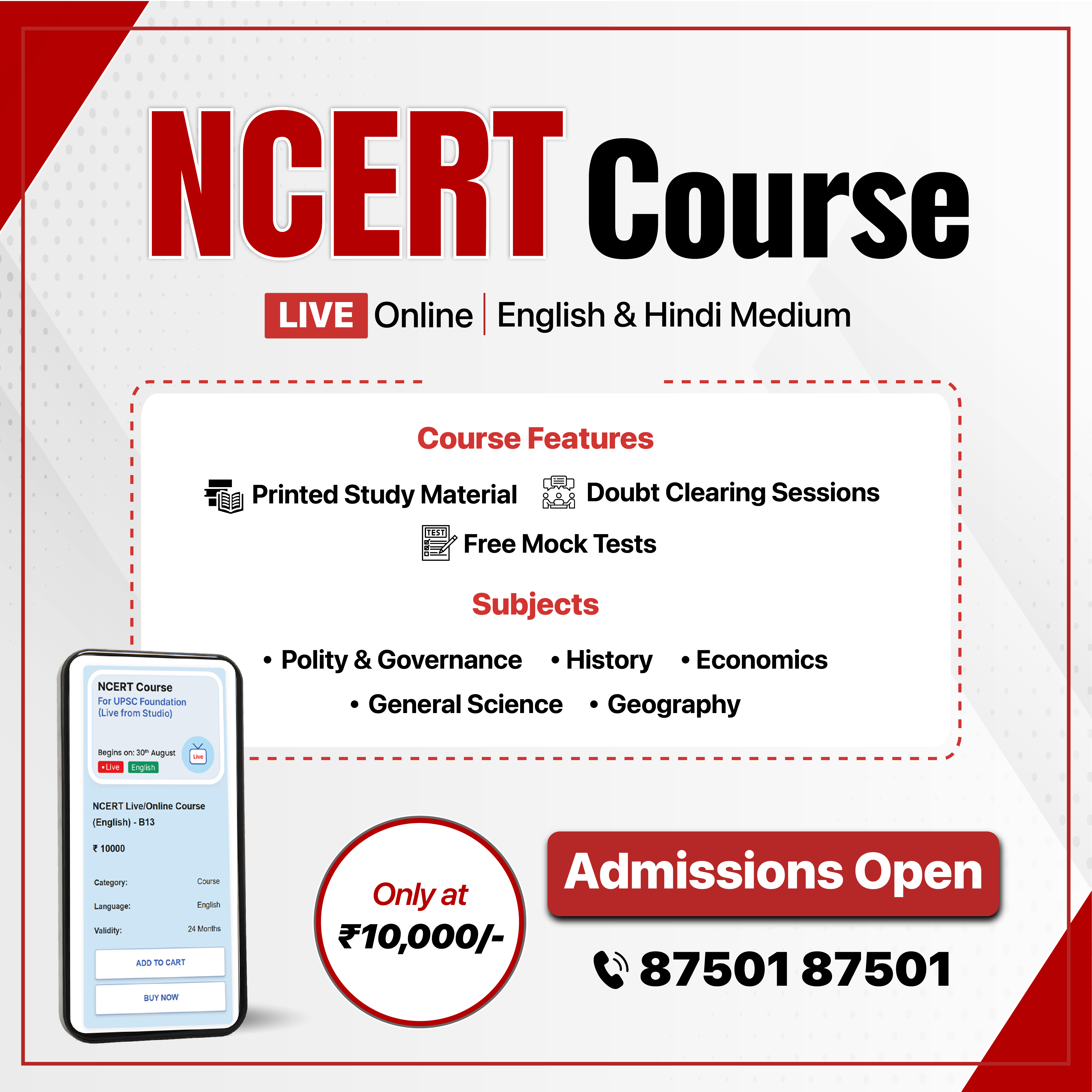
Indian History
NCERT Revises Textbook to Acknowledge Ancient Indian Contributions
For Prelims: Aryabhatta, Brahmagupta, National Mission for Manuscripts, TKDL, Biological Diversity Act 2002, GI tags.
For Mains: Indian Heritage and Culture, Relevance of ancient scientific principles in modern innovation and research
Why in News?
The National Council of Educational Research and Training (NCERT) has updated its Class 7 mathematics textbook to more prominently feature ancient Indian achievements in mathematics, particularly in algebra and geometry.
- This move aligns with the National Education Policy (NEP) 2020's emphasis on incorporating Indian Knowledge Systems in education.
What were the Key Contributions of Ancient India to the Development of Mathematics?
- Ancient Indian Contributions: The revised book credits Indian mathematicians, like Brahmagupta (7th century CE) and Bhaskaracharya (12th century CE) with foundational work in algebra.
- It cites Brahmagupta’s Brahmasphutasiddhanta, which articulated the first known rules for operations with positive and negative numbers, marking a milestone in the history of arithmetic and algebra.
- Brahmagupta’s Brahmasphutasiddhanta introduced the use of zero (0) as a number.
- These ideas were later translated into Arabic and influenced Islamic scholars like Al-Khwarizmi, whose works reached Europe and shaped modern mathematics.
- The Sulba Sutras ( 800–500 BCE) contain knowledge demonstrating advanced geometric understanding, including principles similar to Pythagoras Theorem.
- Aryabhatta (476 CE) introduced the place value system and decimal notation.
- This system simplified arithmetic, making calculations faster and easier, and was foundational for many practical inventions.
Major Contributions of Ancient India in Different Fields
- Science-Theory of Atoms: The ancient Indian scientist Kanad proposed the atomic theory centuries before John Dalton, speculating the existence of small, indestructible particles called anu, which could be in a state of rest or motion.
- Astronomy-Heliocentric Theory: Aryabhata, in his book Aryabhatiya, was one of the earliest to correctly state that the Earth is round, rotates on its axis, and revolves around the Sun, predating the heliocentric theory by centuries.
- Varahamihira’s Panchasiddhantika integrated Greek and Indian astronomy, while Brahmagupta precisely calculated planetary positions and the solar year.
- Metallurgy-Wootz Steel: Ancient India developed Wootz steel, a high-quality steel alloy used in swords and other weapons. Produced by the Tamil people, it was famous for its patterned bands and was highly prized in the ancient world.
- India pioneered the distillation process to smelt zinc, with the ancient site of Zawar in Rajasthan being the world’s first known zinc smelting site. This technique was developed as early as the 12th century.
- Medicine:The Sushruta Samhita, written by Sushruta in the 6th century BCE, outlined complex surgical techniques, including rhinoplasty (nose reconstruction), making significant contributions to the field of plastic surgery.
- Charaka, regarded as the father of Indian medicine, wrote the Charakasamhita, which presented foundational ideas on digestion, metabolism, and immunity, influencing medical practices for centuries.
- Chemistry: Through Rasayana, scholars like Nagarjuna refined metals and made perfumes, dyes, and glass - revealing deep chemical understanding.
What is the Significance of Including Ancient India's Contributions in the School Curriculum?
- Decolonizing Curriculum: The changes reflect the NEP 2020 objective of moving beyond Eurocentric narratives in Indian education, rebalancing the portrayal of India's intellectual legacy.
- Impetus for Inquiry-Based Learning: By including diverse mathematical traditions and original problems from Sanskrit sources, the new curriculum aims to foster a more inquiry-driven approach and engagement with historical context.
- National Integration and Inspiration: The renewed focus on Indian Knowledge Systems seeks to nurture a sense of pride in India’s scientific and mathematical heritage, motivating students to pursue STEM with a deeper cultural understanding.
What are the Challenges in Preserving Ancient Indian Knowledge?
- Physical and Conservation Challenges: Manuscripts written on organic materials like palm leaves and birch bark are highly fragile and prone to ageing, insect damage, and fungal growth.
- Scholarly and Linguistic Challenge: Manuscripts exist in more than 80 languages and numerous ancient scripts such as Sharada and Grantha, which very few experts can interpret today.
- Frequent scribal errors, missing portions, and the loss of oral nuances make accurate reconstruction and translation difficult.
- Institutional and Legal Challenges: With millions of manuscripts scattered across temples, private collections, and libraries, many of which remain uncatalogued or inaccessible.
- The absence of a unified legal framework and ownership disputes hinder coordinated preservation and access.
- Colonial Legacy: Western historiography often marginalized Indian scientific traditions, portraying them as philosophical rather than empirical. This perception persists in some academic narratives.
- Commercial Exploitation: Cases like the biopiracy of neem, basmati rice, and turmeric highlight the vulnerability of traditional knowledge to misuse without proper legal protection.
- Fragmented Institutional Efforts: Despite initiatives likeTraditional Knowledge Digital Library (TKDL) and National Mission for Manuscripts (NMM), coordination between traditional scholars and modern scientific institutions remains limited.
What are the Initiatives Taken by India to Preserve Ancient Indian Knowledge?
- Institutional and Mission-Based Initiatives:
- National Mission for Manuscripts (NMM) (2003): NMM was established under the Ministry of Culture to document, conserve, and digitize manuscripts written in diverse Indian languages and scripts.
- Indira Gandhi National Centre for the Arts (IGNCA): Serves as a hub for research, preservation, and dissemination of India’s traditional arts and knowledge systems.
- Education and Digital Preservation:
- National Education Policy (NEP) 2020: NEP 2020 emphasizes integrating India’s ancient wisdom—mathematics, astronomy, medicine, and philosophy—into school and higher education.
- Digital Preservation: Sanskrit texts and manuscripts are being digitized and translated by universities and cultural bodies for global accessibility.
- Promotion of Traditional Knowledge Systems:
- Ministry of AYUSH: Advances Ayurveda, Yoga, Unani, Siddha, and Homeopathy globally through research and scientific validation.
- UNESCO's Local and Indigenous Knowledge Systems (LINKS): It is an interdisciplinary initiative that promotes indigenous and local knowledge and its meaningful inclusion in environmental policy and action.
- Legal and Policy Measures for Protection
- Traditional Knowledge Digital Library (TKDL)
- Trademark Act, 1999: Trademark Act Safeguards indigenous agricultural and biological products through brand differentiation.
- Geographical Indications (GI): GI tag grants identity to region-specific products, preserving cultural authenticity.
- WIPO Treaty on Intellectual Property, Genetic Resources and Traditional Knowledge (2024): WIPO Treaty (2024) strengthens transparency by mandating patent disclosure of genetic resource origins and associated traditional knowledge.
Conclusion
Ancient India made lasting contributions to mathematics, astronomy, medicine, metallurgy, and chemistry. These innovations influenced the scientific development of civilizations in Asia, the Middle East, and Europe. The renewed recognition of these contributions marks an important step in reclaiming and celebrating India’s scientific heritage.
|
Drishti mains question Evaluate the relevance of traditional Indian knowledge systems in the context of contemporary scientific innovation and intellectual property protection. |
Frequently Asked Questions
1. Why is the study of ancient Indian science and technology important for UPSC aspirants?
It highlights India’s scientific heritage, showcasing indigenous innovation in mathematics, astronomy, medicine, and metallurgy—key for cultural and science-based UPSC topics.
2. How did ancient Indian mathematical knowledge influence global scientific development?
Concepts of algebra, zero, and decimal notation from Indian scholars like Brahmagupta and Aryabhatta spread via Arabic translations, forming the foundation of modern mathematics.
3. What are the main challenges in preserving ancient Indian knowledge?
Loss of manuscripts, limited translations, colonial neglect, and weak institutional coordination threaten the documentation and global accessibility of traditional knowledge.
4. What steps has the government taken to protect traditional knowledge?
Through initiatives like NMM, TKDL, AYUSH, and NEP 2020, India promotes preservation, scientific validation, and integration of ancient wisdom into education and policy.
UPSC Civil Services Examination, Previous Year Questions (PYQs)
Mains
Q. How is the Government of India protecting traditional knowledge of medicine from patenting by pharmaceutical companies? (2019)
Q. India’s Traditional Knowledge Digital Library (TKDL), which has a database containing formatted information on more than 2 million medicinal formulations, is proving a powerful weapon in the country’s fight against erroneous patents. Discuss the pros and cons of making this database publicly available under open-source licensing. (2015)

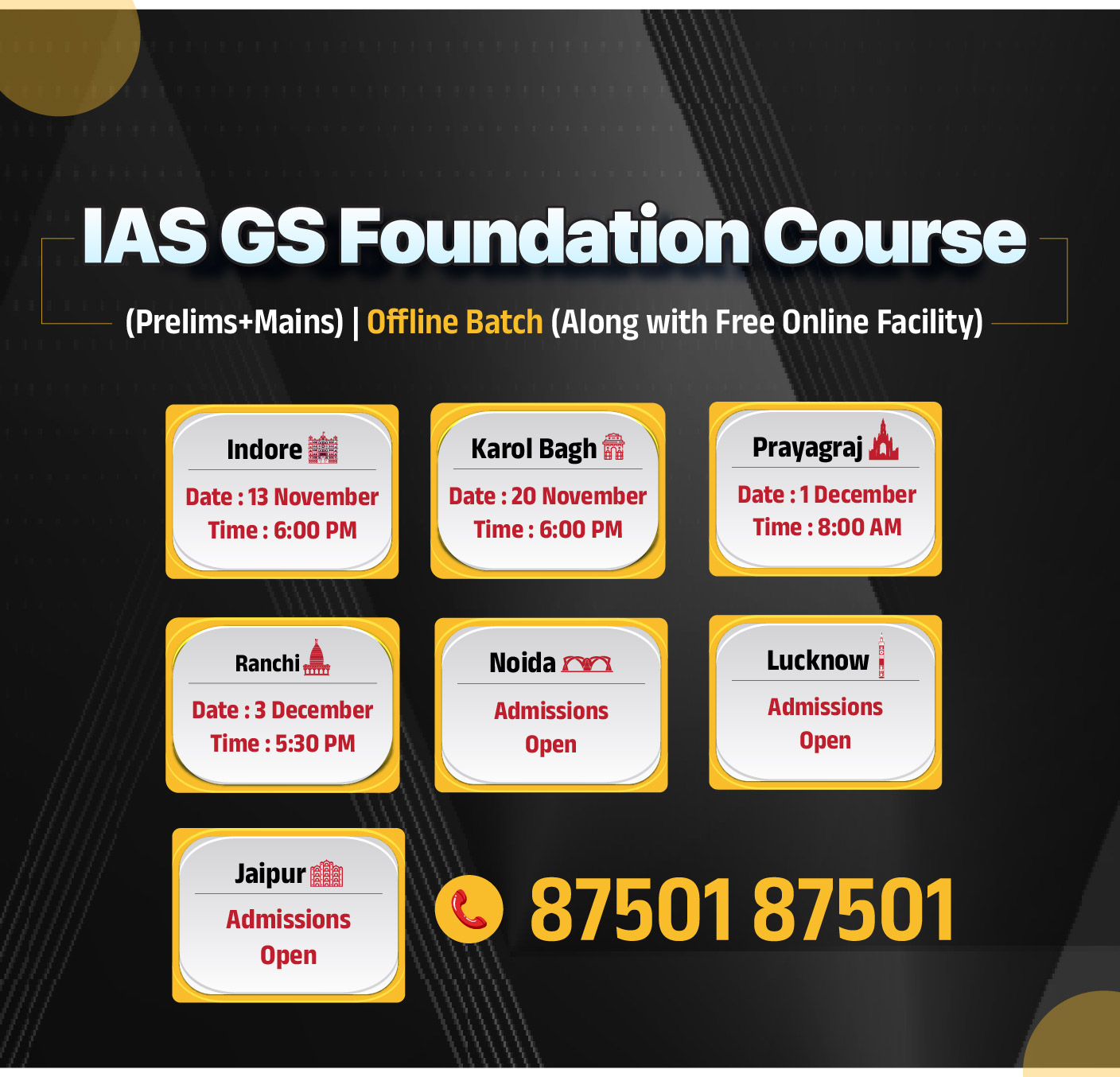
Facts for UPSC Mains
Tropical Forest Forever Facility (TFFF)
Why in News?
The Tropical Forest Forever Facility (TFFF) initiative was launched on the sidelines of the COP30 climate summit in Belém, Brazil, aiming to raise and invest USD 125 billion to conserve tropical forests.
- India has joined the Brazil-led TFFF as an observer, reaffirming its commitment to multilateral climate action under the Paris Agreement.
What is the Tropical Forest Forever Facility (TFFF) Initiative?
- About: TFFF is a permanent, self-financing investment fund aimed at conserving tropical forests. It will reward up to 74 developing tropical forest countries for keeping old-growth forests intact.
- Payments will be based on annual satellite remote sensing data for transparent forest monitoring.
- Purpose and Rationale: It aims to shift economic incentives by making standing forests more valuable than cleared land, countering deforestation driven by higher returns from land conversion.
- It also recognises tropical forests’ ecosystem services, including carbon storage, temperature regulation, and biodiversity support.
- Funding Structure: It aims to raise USD 125 billion, with USD 25 billion from wealthy governments and philanthropists and USD 100 billion from private investors.
- The fund will invest in a mixed portfolio of public and corporate market bonds, and annual returns will be given to tropical forest nations as incentives for forest conservation.
- Funding Commitments: Countries pledging contributions include Brazil (USD 1 billion), Colombia (USD 250 million), Indonesia (USD 1 billion), Norway (USD 3 billion over 10 years), the Netherlands (USD 5 million), and Portugal (1 million Euros).
- Significance of TFFF: It is described as an unprecedented initiative giving the Global South leadership in forest conservation, offering permanent incentives to protect forests and repositioning tropical forests as high-value ecological capital.
Tropical Forest
- About: Tropical forests are dense, warm-weather (20-25°C) forests found in the equatorial region (between 23.5°N and 23.5°S latitude, between the Tropic of Cancer and the Tropic of Capricorn). They are characterized by high biodiversity, towering trees, and a multi-layered canopy that creates a unique ecosystem.
- Types: Tropical forests are mainly of two types:
- Tropical Rainforests: Biologically rich, with high rainfall (over 2,000 mm/year) and perpetually warm, humid conditions, e.g., Amazon, Congo Basin, Southeast Asia.
- Tropical Seasonal (Dry) Forests: Experience a distinct dry season, causing trees to shed leaves, found in India, Central America, and eastern Africa.
- Coverage and Biodiversity: Tropical forests cover about 6% of Earth’s land and host 80% of documented species, making them highly biodiverse ecosystems.
- Tropical Forest Nations: The world’s largest tropical forests are found in Brazil, the Democratic Republic of the Congo, Indonesia, Australia, Angola, Peru, Sudan, and India.
- Threats and Deforestation: Tropical forests are facing rapid loss, with two-thirds of global forest cover loss occurring in tropics and sub-tropics.
- Between 2004 and 2017, over 43 million hectares were lost—an area roughly the size of Morocco.
What Concerns are Associated with the Tropical Forest Forever Facility (TFFF)?
- Market Volatility Risk: The TFFF’s reliance on bond investments, especially in developing nations, makes it vulnerable to market volatility; a financial crash—like in 2008-09 or during Covid-19 could wipe out returns and disrupt payments to forest-conserving countries.
- Undermine Developed Countries’ Obligations: Critics argue that the TFFF may weaken developed countries’ legal responsibilities for climate and nature finance, as it operates outside the UNFCCC framework and is not bound by the rules that hold wealthy nations accountable.
- Weakening UNFCCC Financial Mechanism: Experts warn that the TFFF may weaken UNFCCC and Paris Agreement financial mechanisms by shifting focus from guaranteed public finance to voluntary, market-based funding, potentially diluting efforts to secure predictable finance for developing countries.
- Risk of Greenwashing: There is concern that the TFFF may let wealthy nations and corporations claim credit through voluntary donations while avoiding legally mandated emissions cuts, and it remains unclear whether payments will ensure additional conservation or simply reward forests that were never at risk.
- Fear of Inequitable Distribution: Unclear payment criteria and governance raise concerns of powerful countries dominating decisions, while funds may not reach local and indigenous communities who best protect forests, leaving poverty and land rights issues unresolved.
How can we Improve the Protection of Tropical Forests?
- Market Reforms: Governments should redirect subsidies driving deforestation for cattle ranching, soy, and palm oil toward sustainable agroforestry, and promote deforestation-free supply chains through strong laws like the EU's Deforestation Regulation.
- Enforce Legal Frameworks: Formally recognize and protect Indigenous land rights to empower forest guardians. Strengthen law enforcement against illegal logging and mining using satellite monitoring.
- Leverage Technology for Transparency: Fund and use satellite monitoring (e.g., Global Forest Watch), drone mapping, and real-time data tracking to provide accessible forest cover information, enable rapid response to deforestation alerts, and support transparent, accountable forest management.
- Integrate Conservation with Climate Goals: Incorporate forest conservation into National Determined Contributions (NDCs) under the Paris Agreement and promote sustainable development that prevents forest conversion, focusing on green infrastructure and a transition to a bio-economy.
- Increase International Cooperation: A key step is to strengthen international cooperation by aligning voluntary funds like the TFFF with UNFCCC obligations, ensuring they complement rather than undermine existing climate finance commitments.
Conclusion
- The TFFF is an ambitious market-based initiative led by the Global South to financially incentivize tropical forest conservation. Its success depends on managing financial volatility, ensuring equitable governance, and complementing the UNFCCC’s legally binding climate finance framework.
|
Drishti Mains Question: Enumerate the key strategies required for the conservation of tropical forests. How can community participation and traditional knowledge enhance these efforts? |
Frequently Asked Questions (FAQs)
1. What is the Tropical Forest Forever Facility (TFFF)?
TFFF is a $125 billion permanent, self-financing fund rewarding 74 developing countries for conserving old-growth tropical forests, with payments based on satellite-monitored forest cover.
2. Which countries have pledged funding to TFFF so far?
Brazil ($1B), Indonesia ($1B), Colombia ($250M), Norway ($3B over 10 years), Netherlands ($5M), Portugal (€1M).
3. What are tropical forests?
Tropical forests are dense, warm-weather forests found between the Tropic of Cancer and Tropic of Capricorn (23.5°N – 23.5°S). They are characterized by high biodiversity, multi-layered canopy, towering trees, and warm, humid conditions.
UPSC Civil Services Examination, Previous Year Questions (PYQs)
Prelims
Q. Consider the following statements: (2023)
Statement-I: The soil in tropical rain forests is rich in nutrients.
Statement-II: The high temperature and moisture of tropical rain forests cause dead organic matter in the soil to decompose quickly.
Which one of the following is correct in respect of the above statements?
(a) Both Statement-I and Statement-II are correct and Statement-II is the correct explanation for Statement-I
(b) Both Statement-I and Statement-II are correct and Statement-II is not the correct explanation for Statement-I
(c) Statement-I is correct but Statement-II is incorrect
(d) statement I is incorrect but statement II is correct.
Ans: (d)
Q. At the national level, which ministry is the nodal agency to ensure effective implementation of the Scheduled Tribes and Other Traditional Forest Dwellers (Recognition of Forest Rights) Act, 2006? (2021)
(a) Ministry of Environment, Forest and Climate Change
(b) Ministry of Panchayati Raj
(c) Ministry of Rural Development
(d) Ministry of Tribal Affairs
Ans: (d)
Mains
Q. “The most significant achievement of modern law in India is the constitutionalization of environmental problems by the Supreme Court.” Discuss this statement with the help of relevant case laws. (2022)

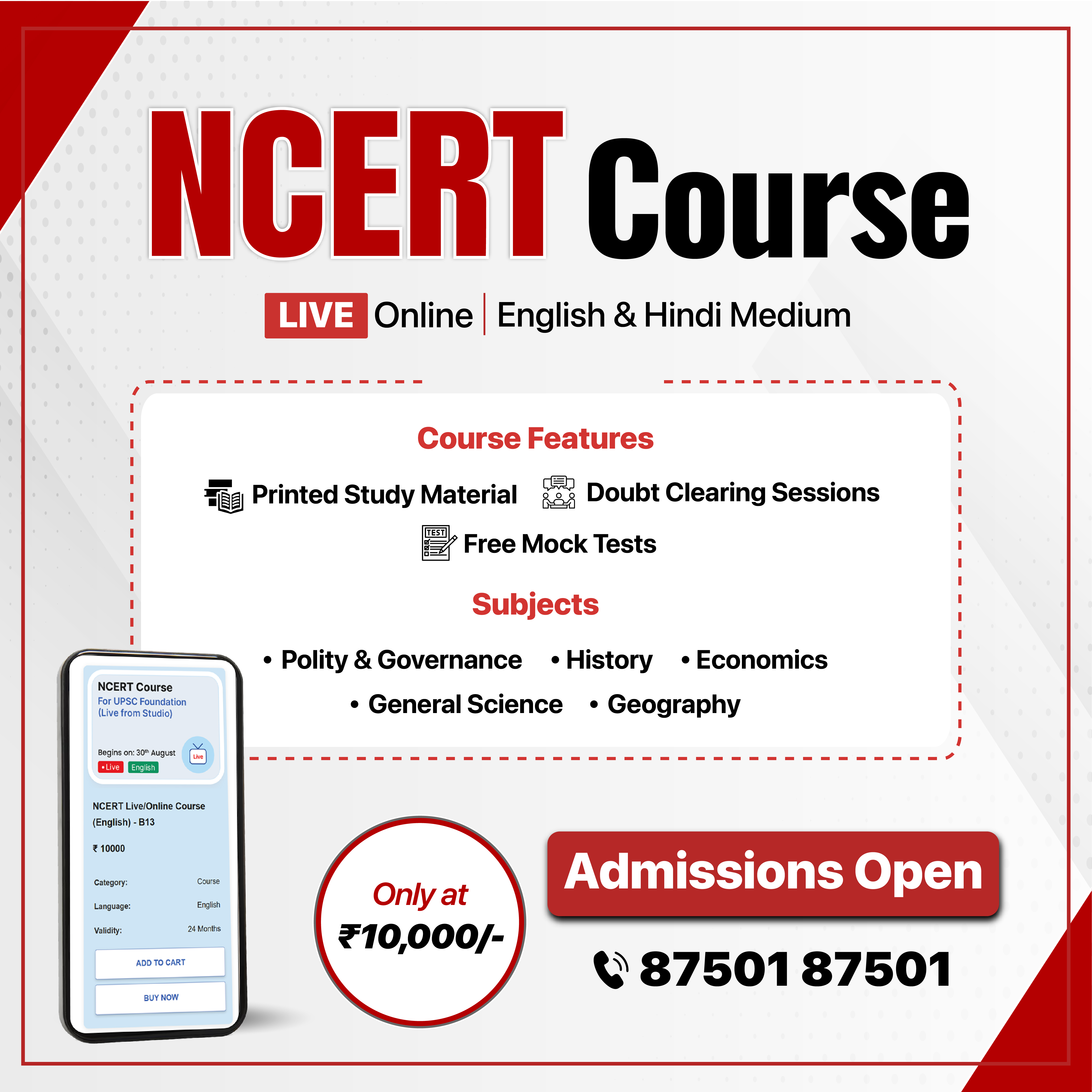
Important Facts For Prelims
Gati Shakti Transport Planning and Research Organisation (GTPRO)
Why in News?
The Central Government is planning to restructure the PM Gati Shakti governance framework by dissolving the existing Network Planning Group (NPG) and establishing a new high-level body, the Gati Shakti Transport Planning and Research Organisation (GTPRO).
- The NPG, established under DPIIT to coordinate inter-ministerial projects within the PM Gati Shakti National Master Plan, faced several internal challenges.
What is GatiShakti Transport Planning and Research Organisation(GTPRO)?
- About: The Integrated Transport Planning Authority, likely named Gati Shakti Transport Planning and Research Organisation (GTPRO), will create medium- to long-term roadmaps for each transport ministry, including roads, railways, shipping, and aviation.
- It will develop integrated 5- and 10-year plans, aligning with India’s goal to create world-class infrastructure and become a developed nation by 2047.
- Structure: Headed by a Cabinet Secretary.
- Functions:
- Project Appraisal: Review and approve transport sector projects valued above ₹500 crore.
- Monitoring & Evaluation: Track project progress and assess economic and environmental outcomes.
- Data Repository: Maintain a unified national database to support future infrastructure planning.
- Policy Research: Recommend strategies to lower logistics costs and improve operational efficiency.
- Institutional Model: Inspired by unified transport planning bodies in the US, UK, and Germany, GTPRO will function as an integrated think tank for infrastructure strategy and research.
- Implementation Timeline: Expected to be operational from the next financial year.
PM Gati Shakti National Master Plan (NMP)
- The PM Gati Shakti National Master Plan (NMP) is the digital command centre for infrastructure planning in India.
- Built on a GIS-based platform, it hosts over 550 layers of live data, including economic clusters, logistics hubs, forests, rivers, and social infrastructure.
- As of 2025, the entire 1.46 lakh km National Highway network has been mapped onto the NMP portal.
- This enables geo-intelligent planning, reducing project delays, environmental conflicts, and cost overruns.
India’s Initiatives for New-Age Highways
- India’s Standing: India has the second-largest road network in the world, spanning over 63 lakh km as of March 2025, with National Highways expanding by 60% from 91,287 km in 2014 to 1,46,204 km in 2025.
- FASTag & NETC Ecosystem: Developed by NPCI, the National Electronic Toll Collection (NETC) ensures seamless toll payments via FASTag — an RFID-based system with over 98% coverage with 8 crore users.
- MLFF Tolling System (2025): First Multi-Lane Free Flow (MLFF) toll launched at Choryasi Fee Plaza, Gujarat — a camera and RFID-based tolling system that reads vehicles in motion.
- Rajmargyatra: The Rajmargyatra app, launched by the Government, is a citizen-centric mobile platform for highway travellers.
- NHAI One App: The NHAI One app unifies project operations and uses real-time geo-tracking to enhance efficiency and transparency across highways.
- Technology Driving Intelligent Transport Systems (ITS): ITS integrates ATMS and V2X technologies, deployed on key corridors such as Delhi–Meerut, Trans-Haryana, Eastern Peripheral, and Bengaluru–Mysuru Expressways.
Frequently Asked Questions (FAQs):
Q1. What is GTPRO and why is it being established?
GTPRO (GatiShakti Transport Planning and Research Organisation) will replace the Network Planning Group to provide unified, long-term infrastructure planning and project appraisal across all transport ministries.
Q2. How does PM Gati Shakti’s GIS-based platform improve project planning?
It integrates 550+ layers of real-time data, enabling faster, environmentally sensitive, and more efficient transport planning.
Q3. What role do apps like Rajmargyatra and NHAI One play in transport modernization?
They provide real-time data, user feedback, and operational monitoring, promoting citizen engagement and digital governance.
UPSC Civil Services Examination, Previous Year Questions (PYQs)
Prelims:
Q1. In India, the term “Public Key Infrastructure” is used in the context of : (2020)
(a) Digital security infrastructure
(b) Food security infrastructure
(c) Health care and education infrastructure
(d) Telecommunication and transportation infrastructure
Ans: (a)
Mains:
Q. National Urban Transport Policy (NUTP) emphasises on ‘moving people’ instead of ‘moving vehicles’. Discuss critically the success of the various strategies of the Government in this regard. (2014)


Important Facts For Prelims
Transplantation of Human Organs and Tissues (Amendment) Rules, 2025
Why in News?
The Union Ministry of Health and Family Welfare has notified the Transplantation of Human Organs and Tissues (Amendment) Rules, 2025 under the Transplantation of Human Organs and Tissues Act (THOTA), 1994 to simplify corneal transplantation protocols and promote equitable access to organ and tissue transplantation services across India.
What are the Key Highlights of the Transplantation of Human Organs and Tissues (Amendment) Rules, 2025?
- Eases Equipment Requirements: The mandatory requirement for clinical specular microscopes in corneal transplantation centres has been removed.
- These microscopes, used to assess corneal cell health, were often expensive and difficult to procure for smaller centres.
- The amendment will ease infrastructure and operational hurdles for smaller eye centres, improving access to corneal transplant services nationwide.
Significance
- Promotes Equitable Healthcare: Expands access to organ, tissue, and eye donation services across regions, aligning with the goals of the National Organ Transplant Programme (NOTP).
- Boosts Eye Donation Efforts: Encourages more institutions to participate in eye donation and corneal transplantation, increasing the availability of donor tissue.
- Addresses Corneal Blindness: Helps tackle one of India’s leading causes of visual impairment by improving access to timely treatment.
- Corneal Blindness is vision impairment or blindness caused by damage or disease of the cornea (the transparent part of the eye that covers the iris and the pupil and allows light to enter the inside), often due to infection, injury, malnutrition, or genetic disorders.
- According to the Indian Journal of Ophthalmology, corneal blindness is the second-leading cause of blindness after cataract among Indians, affecting 1.2 million people, with 25,000–30,000 new cases each year.
What is Transplantation of Human Organs and Tissues Act, 1994?
- Background: Before 1994, India lacked a unified law on organ transplantation, relying on scattered state acts like the Bombay Corneal Grafting Act (1957) and Maharashtra Kidney Transplantation Act (1982).
- Rising illegal organ trade, especially in kidneys, led to public and expert demand for national regulation. The 1994 Act was framed on the recommendations of a committee led by Dr. L. M. Singhvi (1991) to ensure ethical and transparent transplantation.
- THOTA, 1994: It was enacted to regulate the removal, storage, and transplantation of human organs and tissues for therapeutic purposes, and to prevent commercial dealings in human organs.
- The Act facilitates the ethical retrieval of organs from brain-dead individuals and tissue transplantation in India by establishing a clear legal framework for donation and medical procedures.
- It promotes transparency and accountability in the retrieval, storage, and transplantation of human organs and tissues.
- Major Provisions of the Act: Defines the terms donor, recipient, and near relative to prevent misuse.
- It specifies that organ removal can be done only for therapeutic purposes and with informed consent.
- Establishes Authorization Committees to regulate transplantation activities.
- Amendments and Rules: The 2011 Amendment expanded the scope of the Act through the Transplantation of Human Organs (Amendment) Act, 2011, broadening coverage to include more organs and tissues.
- The Transplantation of Human Organs and Tissues Rules, 2014 were notified to operationalize the provisions of the Act.
- Implementation and Adoption by States: Since health is a State subject, states must adopt the Act for it to be applicable.
- The 1994 Act applies to all States and Union Territories, except Andhra Pradesh and Telangana, which have their own laws.
National Organ Transplant Programme (NOTP)
- About: The Ministry of Health and Family Welfare, is implementing the NOTP to promote equitable access to organ and tissue donation and transplantation across all States and Union Territories.
- Institutional Framework: NOTTO (National Organ and Tissue Transplant Organisation) functions as the apex body in New Delhi, supported by Regional Organ and Tissue Transplant Organisations (ROTTOs) and State Organ and Tissue Transplant Organisations (SOTTOs).
- Key Components: The programme includes setting up State Organ and Tissue Transplant Organisations (SOTTOs) in every State and UT, along with National, Regional, and State Bio-material Centres.
- It provides financial aid to improve organ transplant facilities, trains medical professionals, and supports hiring transplant coordinators in medical colleges and trauma centres.
- Additionally, it ensures post-transplant immunosuppressant drugs for Below Poverty Line (BPL) patients.
- Achievements: India’s organ transplants increased from 4,990 in 2013 to 18,911 in 2024. India ranks 3rd globally in total organ transplants, behind the US and China, and 1st in living donor transplants.
Frequently Asked Questions (FAQs)
1. What is the Transplantation of Human Organs and Tissues Act (THOTA), 1994?
THOTA, 1994 is the central law regulating removal, storage and transplantation of human organs and tissues for therapeutic purposes and prohibiting commercial dealings in organs.
2. What are the key highlights of the Transplantation of Human Organs and Tissues (Amendment) Rules, 2025?
The 2025 Rules remove the mandatory clinical specular microscope requirement for corneal centres, easing infrastructure hurdles and improving access to corneal transplantation especially in smaller and rural centres.
3. What is the National Organ Transplant Programme (NOTP)?
NOTP is the Government of India’s programme to promote organ and tissue donation nationwide via NOTTO (national), ROTTOs (regional) and SOTTOs (state), tissue banks, training, funding and awareness campaigns.
UPSC Civil Services Examination, Previous Year Questions (PYQs)
Prelims
Q. Consider the following statements: (2020)
- Genetic changes can be introduced in the cells that produce eggs or sperms of a prospective parent.
- A person’s genome can be edited before birth at the early embryonic stage.
- Human induced pluripotent stem cells can be injected into the embryo of a pig.
Which of the statements given above is/are correct?
(a) 1 only
(b) 2 and 3 only
(c) 2 only
(d) 1, 2 and 3
Ans: (d)
Q. With reference to the scientific progress of ancient India, which of the statements given below are correct? (2012)
- Different kinds of specialised surgical instruments were in common use by the 1st century AD.
- Transplant of internal organs in the human body had begun by the beginning of the 3rd century AD.
- The concept of sine of an angle was known in 5th century AD.
- The concept of cyclic quadrilaterals was known in 7th century AD.
Select the correct answer using the codes given below:
(a) 1 and 2 only
(b) 3 and 4 only
(c) 1, 3 and 4 only
(d) 1, 2, 3 and 4
Ans: (c)


Rapid Fire
MITRA SHAKTI-2025
The 11th edition of Exercise MITRA SHAKTI-2025, a joint military drill between India and Sri Lanka, was held at Belagavi, Karnataka, to strengthen defence cooperation and enhance interoperability in counter-terrorism and peacekeeping operations.
- Exercise MITRA SHAKTI: It is an annual joint training exercise between the Indian and Sri Lankan Armies, conducted alternatively in both countries since 2012.
- Sub-Conventional and Joint Counter-Terrorist Operations: The aim of the exercise is to jointly rehearse conduct of Sub Conventional Operations under Chapter VII of United Nations Mandate (deals with action concerning threats to peace, breaches of peace, and acts of aggression).
- The scope of the exercise includes synergising joint responses during counter-terrorist operations.
- Exercise MITRA SHAKTI-2025 features Drones and Counter Unmanned Aerial Systems (C-UAS) for enhanced operational effectiveness.
India-Sri Lanka Defence and Security Cooperation
- Sri Lanka is vital to India’s ‘MAHASAGAR Vision’ because of its strategic location near key Indian Ocean shipping lanes.
- Joint Military Exercises: Exercise MITRA SHAKTI (Army) and SLINEX (Naval) held alternatively in India and Sri Lanka every year.
- Humanitarian and Environmental Assistance: India has been the “first responder” during maritime emergencies in Sri Lankan waters.
- Indian Navy and Coast Guard intervened in incidents like MV X-Press Pearl disaster (2021) and MT New Diamond (vessel) fire incident (2020) to prevent environmental disasters.
- Capacity Building Initiatives: Maritime Rescue Coordination Centre (MRCC) for the Sri Lanka Navy, set up under a Government of India grant, commissioned in 2024.
| Read more: India-Sri Lanka Relations |


Rapid Fire
Booker Prize 2025
David Szalay , a Hungarian-British author, has won the prestigious 2025 Booker Prize for his sixth novel, Flesh.
- His novel “Flesh” follows a man’s rise from poverty in Hungary to wealth in London, exploring fate and ambition.
Booker Prize
- The Booker Prize is the world’s leading literary award for a single work of fiction and awarded by Booker Prize Foundation.
- The prize was first awarded in 1969 to promote reading and literary excellence.
- It initially recognised writers from the Commonwealth, Ireland, but now spans the globe, welcoming authors of any nationality.
- It aims to promote excellence in fiction by rewarding an original work of fiction, written in English.
- Bernice Rubens was the first woman to win this prize in 1970 for her novel The Elected Member.
- Notable Past Winners Include:
- Salman Rushdie – Midnight’s Children (1981)
- Arundhati Roy – The God of Small Things (1997)
- Kazuo Ishiguro – The Remains of the Day (1989) (Also 2017 Nobel Prize in Literature)
- Arvind Adiga - The White Tiger
- Samantha Harvey – Orbital (2024)
- Difference Between Booker Prize & International Booker Prize:
- The Booker Prize was first awarded in 1969 and is for the best single work of fiction originally written in English.
- The International Booker Prize was established later in 2005 and is for the best single work of fiction translated into English from any other language.
- It recognizes the achievement of both the author and the translator.
| Read More: Heart Lamp wins 2025 International Booker Prize |


Rapid Fire
Vanadium Redox Flow Battery (VRFB) System
The Minister of Power and Housing & Urban Affairs inaugurated India’s largest and first megawatt-hour (MWh)-scale Vanadium Redox Flow Battery (VRFB) system with a 3 MWh capacity.
- This marks a key milestone in advancing long-duration energy storage (LDES) to strengthen renewable energy integration and grid resilience.
- Vanadium Redox Flow Battery: It is a type of electrochemical energy storage system that uses vanadium ions in different oxidation states to store and release electrical energy through redox (reduction–oxidation) reactions.
- Unlike conventional batteries, a VRFB stores energy in liquid electrolytes kept in external tanks, making it modular and easily scalable.
- Its energy capacity depends on the volume of the electrolyte, while the power output is determined by the size of the cell stack, allowing both to be scaled independently.
- VRFBs Advantages: VRFBs are scalable, long-lasting, and efficient, offering fast response, deep discharge, and high safety with non-flammable, recyclable vanadium electrolytes for sustainable energy storage.
- VRFBs Importance for Renewable Integration: Renewable sources like solar and wind generate power intermittently, depending on weather conditions.
- VRFBs store excess solar and wind energy, provide long-duration storage, and enhance grid stability by balancing supply and demand during intermittent generation.
- VRFB reduces dependence on imported lithium-ion batteries, strengthens energy security in line with Atmanirbhar Bharat.
| Read more: Aluminium-ion Battery |

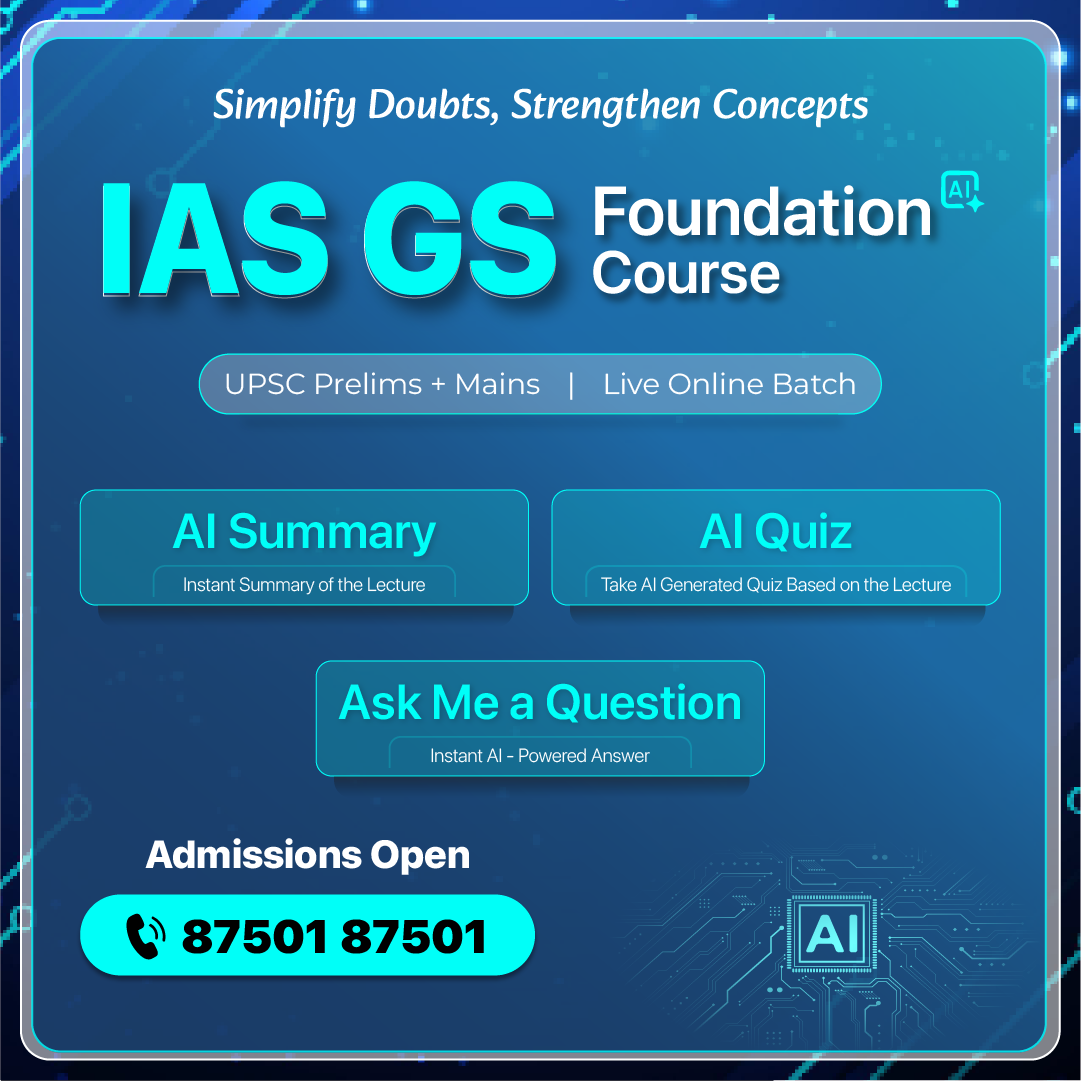
Rapid Fire
‘Country-of-Origin’ Disclosure for E-Commerce Products
The Department of Consumer Affairs has issued the Draft Legal Metrology (Packaged Commodities) (Second) Amendment Rules, 2025, proposing to make it mandatory for e-commerce platforms to provide searchable and sortable filters based on the 'Country of Origin' for packaged commodities sold online.
- This aims to enhance consumer empowerment, transparency, and promote Made in India products under Atmanirbhar Bharat and Vocal for Local.
Rules of Origin
- About: Rules of Origin (RoO) are criteria used to determine a product’s national source and guide duties, tariffs, trade restrictions, and preferential treatments.
- Types of Rules of Origin: The World Trade Organization (WTO) Agreement on Rules of Origin defines two types:
- Preferential origin: Determines eligibility for reduced tariffs under trade agreements, requiring products to be fully or partly produced in beneficiary countries.
- Non-preferential origin: Applies outside trade agreements to enforce non-tariff measures like trade remedies and quotas.
- Determination of Criteria:
- Wholly Obtained: Entirely produced or obtained in a single country (e.g., minerals, agricultural products, or animals).
- Substantial Transformation: For manufactured goods with imported materials, a product originates where it last underwent substantial transformation, determined by change of tariff classification, value-added, or a specific process.
- Uses of RoO: It supports implementation of commercial policy measures like anti-dumping duties and safeguards, determining MFN or preferential treatment, and aids in trade statistics, labelling, and government procurement. They ensure accurate application of trade regulations and benefits.
| Read More: World Trade Organisation |



